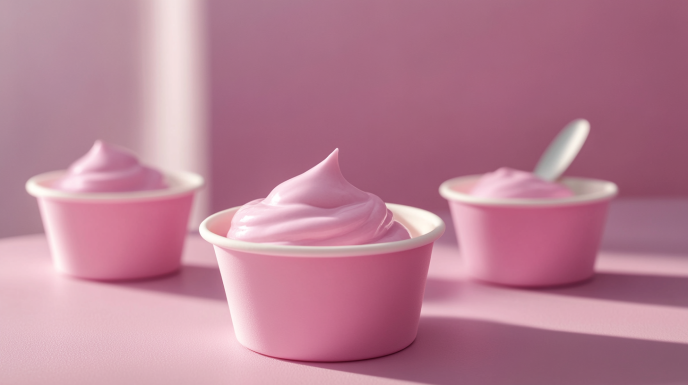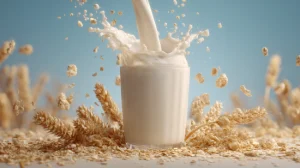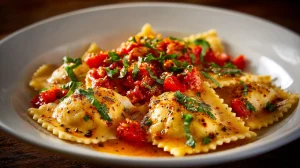
bettergoods Whole Milk Plain Greek Yogurt, 32 oz
- bettergoods Whole Milk Plain Greek Yogurt, 32 oz
- Smooth and creamy whole milk Greek yogurt
- Perfect to serve at breakfast or in your favorite sweet and savory recipes
- Grade A
- Good source of protein
- About 5 servings per container
Discover the creamy phenomenon that’s taking refrigerators by storm
In a world overflowing with yogurt options, one brand has quietly been revolutionizing our dairy experiences. If you haven’t yet discovered Bettergoods Yogurt, prepare for your taste buds to embark on a journey they won’t soon forget. From its humble beginnings to becoming a staple in households nationwide, this isn’t just another yogurt—it’s a cultural movement in a cup.
As someone who’s spent years searching for the perfect balance of flavor, nutrition, and sustainability in my morning routine, I can confidently say that Bettergoods has transformed how I think about this ancient fermented food. Let me take you behind the creamy curtain of this remarkable brand that’s changing how America enjoys one of humanity’s oldest prepared foods.
The Bettergoods Story: More Than Just Another Yogurt
Walking through the refrigerated section of my local market last year, I noticed a striking new addition to the yogurt aisle. The clean, minimalist packaging caught my eye—Bettergoods Yogurt. Unlike the overwhelming visual noise of most dairy products, these containers spoke of simplicity, quality, and purpose.
Bettergoods wasn’t born in a corporate boardroom but in the kitchen of food scientist and entrepreneur Maya Lawson. After years working with major food manufacturers, Lawson became disillusioned with the industry’s reliance on artificial ingredients and excessive sugar. Her vision was simple yet revolutionary: create yogurt as it was meant to be—pure, nutritious, and deeply satisfying.
“I wanted to make yogurt my grandmother would recognize,” Lawson often says in interviews. “Something with integrity in every spoonful.”
The company began in 2019 as a small-batch producer, selling at farmers’ markets throughout the Pacific Northwest. Word spread quickly about this extraordinary yogurt that tasted unlike anything else available commercially. By 2021, Bettergoods had secured distribution in specialty markets, and by 2023, demand had grown so substantially that major grocery chains began stocking their products nationwide.
What Makes Bettergoods Different?
The magic of Bettergoods begins with superior ingredients. Unlike many commercial yogurts that prioritize shelf life and cost-cutting measures, Bettergoods starts with milk sourced exclusively from small family farms practicing regenerative agriculture. These farms prioritize animal welfare, soil health, and sustainable farming practices.
The milk is minimally processed and cultured with proprietary strains of beneficial bacteria that have been carefully selected not just for their probiotic benefits but for the distinctive tangy flavor profile they create. The fermentation process is unhurried—allowing the cultures to develop fully over 24 hours rather than the industry-standard 4-6 hours.
This patience pays dividends in both taste and nutritional value. The slow fermentation breaks down lactose more completely, making Bettergoods naturally lower in lactose than conventional yogurts. It also allows for the development of complex flavor notes that mass-produced yogurts simply can’t achieve.
A Symphony of Flavors
One of the most frequently asked questions about Bettergoods is regarding their available flavors. Unlike brands that offer dozens of artificially flavored varieties, Bettergoods takes a more curated approach with eleven thoughtfully crafted options:
- Pure Plain – Their flagship product, a perfectly balanced, creamy yogurt with no additions
- Vanilla Bean – Featuring real Madagascar vanilla beans
- Wild Blueberry – Made with whole wild blueberries from Maine
- Strawberry Fields – Sweetened with real strawberries and a touch of honey
- Honey Lavender – A sophisticated blend of local honey and culinary lavender
- Lemon Zest – Bright and tangy with organic lemon peel
- Maple Walnut – Pure maple syrup and toasted walnuts
- Coconut Dream – With toasted coconut flakes
- Coffee Infusion – Steeped with fair-trade coffee beans
- Cinnamon Apple – Reminiscent of homemade apple pie
- Dark Chocolate – With fair-trade cacao nibs
What’s noticeably absent from this list are the candy-inspired flavors that dominate much of the yogurt market. Bettergoods believes that yogurt should taste like yogurt—enhanced but never masked by complementary flavors.
Each flavor is available in both whole milk and low-fat varieties, though devotees (myself included) tend to favor the whole milk version for its unmatched creaminess and satiating qualities.
Nutritional Profile: A Dietitian’s Dream
When examining the nutritional facts of Bettergoods Yogurt, it’s clear why health professionals have become some of its biggest advocates. The plain variety contains just two ingredients: milk and live active cultures.
A typical 6-ounce serving of whole milk Plain Bettergoods Yogurt contains:
- 150 calories
- 8g fat (5g saturated)
- 9g protein
- 7g naturally occurring sugar
- 0g added sugar
- 20% daily value of calcium
- 15% daily value of vitamin D
- 1 billion+ CFU of probiotics
The flavored varieties add minimal ingredients—typically just the actual food for flavoring and a touch of organic honey or maple syrup for sweetness. Even with these additions, a flavored Bettergoods typically contains 9-12g of total sugar per serving, compared to 20-25g in conventional flavored yogurts.
This nutritional profile makes Bettergoods appropriate for many dietary approaches. While not explicitly marketed as keto-friendly, the plain variety is low enough in carbohydrates (7g per serving) to fit many modified ketogenic approaches. It’s worth noting that while Bettergoods is gluten-free, it is not dairy-free or vegan as it’s made with real milk.
The Probiotic Powerhouse
One area where Bettergoods truly distinguishes itself is in its probiotic content. While many yogurts advertise “live and active cultures,” Bettergoods takes probiotic potential to another level.
Each serving contains over 1 billion colony-forming units (CFUs) of beneficial bacteria from seven different strains, including:
- Lactobacillus acidophilus
- Lactobacillus bulgaricus
- Streptococcus thermophilus
- Bifidobacterium lactis
- Lactobacillus casei
- Lactobacillus rhamnosus
- Lactobacillus paracasei
This diverse probiotic profile supports not just digestive health but may contribute to immune function and overall wellbeing. The company has invested in research demonstrating that their strains survive the journey through the digestive tract to colonize the gut—something not all probiotics can claim.
Sustainability as a Core Value
Beyond the cup, Bettergoods demonstrates a commitment to sustainability that permeates their entire operation. Their dedication to environmental responsibility is evident in everything from their ingredient sourcing to their packaging choices.
Their milk comes exclusively from farms practicing regenerative agriculture—an approach that sequesters carbon in soil rather than releasing it into the atmosphere. These farms also use rotational grazing, which improves soil health and reduces the need for fertilizers and pesticides.
The packaging itself is made from recyclable #5 plastic for the containers, with lids designed to be easily separated for recycling. The company has announced plans to transition to plant-based, compostable packaging by 2026.
Even their production facility in Oregon operates on 100% renewable energy and has implemented water recycling systems that reduce water usage by 70% compared to industry standards.
Where to Find Bettergoods and What It Costs
As Bettergoods has grown, so has its availability. Once limited to specialty stores and food co-ops, you can now find these premium yogurts in:
- Whole Foods Market
- Sprouts Farmers Market
- Natural Grocers
- Wegmans
- Fresh Market
- Co-ops nationwide
- Select Target locations
- Amazon Fresh
- Thrive Market
The brand has also begun appearing in conventional supermarkets like Kroger, Safeway, and Publix, though availability varies by region. Their store locator on the Bettergoods website provides real-time information about where to find their products nearest you.
As for cost, Bettergoods positions itself as a premium product, and the price reflects this. Individual 6-ounce containers typically retail between $2.29-$2.79, while the 24-ounce family-size containers range from $5.99-$6.99. These prices place Bettergoods in line with other premium yogurt brands like Siggi’s or Noosa, though slightly higher than mass-market brands like Yoplait or Dannon.
For budget-conscious consumers, Bettergoods offers monthly promotions through their newsletter, and many retailers feature the brand in their rotating sales cycles. The company also offers a loyalty program through their app that provides regular discounts for frequent purchasers.
Packaging Options: From Single Servings to Family Style
Bettergoods understands that different households have different needs. Their products come in three main packaging formats:
- Individual 6-ounce cups – Perfect for on-the-go consumption or lunchboxes
- Family-size 24-ounce containers – Ideal for households that consume yogurt regularly
- 4-pack of 4-ounce minis – Designed with children in mind
The mini 4-packs deserve special mention as they represent Bettergoods’ thoughtful approach to creating products for younger consumers. Unlike many kids’ yogurts that rely on cartoon characters and excessive sugar, Bettergoods Kids maintains the same quality standards as their adult line but in more kid-friendly flavors and smaller portion sizes. The packaging features educational content about farms and food production rather than marketing gimmicks.
The Dairy-Free Question
One limitation of Bettergoods’ current lineup is the lack of dairy-free options. As a traditional yogurt producer focused on perfecting milk-based fermentation, they have yet to venture into plant-based alternatives.
When asked about future plans, the company has indicated that they are developing dairy-free options that meet their stringent quality standards, but they won’t release anything until they feel it truly deserves the Bettergoods name. Industry rumors suggest a line of cashew and coconut-based yogurts may be launching in late 2025.
For now, those with dairy allergies or who follow vegan diets will need to look elsewhere for their yogurt fix.
The Competition: How Does Bettergoods Compare?
In the premium yogurt category, Bettergoods faces stiff competition from established brands like Chobani, Fage, Siggi’s, and Noosa. How does it stack up?
Compared to Chobani, Bettergoods contains significantly less sugar (7g vs. 15-22g) in comparable flavors and uses no artificial preservatives or thickeners. Chobani’s greater availability and slightly lower price point give it an advantage in convenience, however.
Against Fage, Bettergoods offers a creamier texture and more diverse flavor options, though Fage’s higher protein content (15g vs. 9g per serving) appeals to protein-focused consumers.
Siggi’s, with its Icelandic skyr-style approach, provides more protein than Bettergoods but has a thicker, more dense texture that some find less versatile for cooking or pairing with toppings.
Noosa, known for its honey-sweetened Australian-style yogurt, most closely resembles Bettergoods in texture and approach but generally contains more sugar and fewer probiotic strains.
What truly distinguishes Bettergoods in this competitive landscape is its unwavering commitment to traditional fermentation methods and regenerative agricultural practices—attributes that appeal strongly to health-conscious consumers who care about the entire food system, not just what’s in their cup.
Beyond the Breakfast Bowl: Cooking with Bettergoods
While delicious straight from the container, Bettergoods Yogurt shines as a versatile ingredient in the kitchen. Its thick texture and balanced tanginess make it exceptional in both sweet and savory applications.
In baking, the Plain variety can replace sour cream in most recipes, lending moisture and tenderness to cakes and quick breads. The higher fat content and lower moisture level (compared to many commercial yogurts) make it particularly successful in baked goods.
For savory applications, Bettergoods makes an exceptional base for dips and sauces. Mixed with herbs, garlic, and a touch of olive oil, it transforms into a tzatziki that would make Greek grandmothers proud. Its stability under heat also makes it suitable for creamy soups and curries.
Smoothie enthusiasts appreciate how Bettergoods adds creaminess without excessive sweetness or the artificial thickeners found in many yogurts marketed for smoothies. The Coffee Infusion flavor, in particular, has developed a cult following among smoothie devotees.
The company’s website features a growing recipe section with dozens of chef-developed applications, from overnight oats to yogurt-marinated chicken to frozen yogurt treats.
The Non-GMO Commitment
For consumers concerned about genetically modified organisms in their food, Bettergoods offers reassurance. All their products are certified non-GMO by the Non-GMO Project, an independent verification program.
This certification covers not just the milk itself but the feed given to the cows producing the milk. The farms supplying Bettergoods commit to using only non-GMO feed for their animals—a significant undertaking in the current agricultural landscape where GM corn and soy dominate animal feed.
This commitment extends to all ingredients used in their flavored varieties. The fruit, honey, maple syrup, vanilla, and other flavorings are all traceable to sources that avoid genetic modification.
What Customers Are Saying
The true measure of any product is customer satisfaction, and here Bettergoods truly excels. The brand consistently earns 4.7-4.9 star ratings across retail platforms and food review sites.
Reviewers frequently mention the “clean” taste, lack of artificial aftertaste, and the satisfying texture. Many note that Bettergoods has helped them reduce sugar cravings and keeps them full longer than other yogurts.
Health-focused consumers appreciate the transparent ingredient list and probiotic benefits, with many reporting improved digestive comfort after switching from other brands.
The most frequent criticism centers on price, with some consumers finding it difficult to justify the premium cost for regular consumption. A small percentage of reviews also mention inconsistency between batches—a natural outcome of working with small farms and seasonal ingredients that the company acknowledges as part of their artisanal approach.
Parents particularly praise the Kids line for offering nutritionally sound options that children actually enjoy without the sugar content of typical children’s yogurts.
The Future of Bettergoods
As Bettergoods continues to grow, the company faces the challenge familiar to many successful food startups: maintaining quality and values while scaling production. Thus far, they’ve managed this balancing act by growing deliberately rather than rushing expansion.
Their five-year plan includes establishing regional production facilities to reduce transportation distances and carbon footprint while keeping their products fresh. They’re also working with agricultural universities to help more conventional dairy farms transition to regenerative practices, expanding their potential supply chain while promoting sustainable agriculture.
Product innovation continues as well. In addition to the rumored plant-based line, industry insiders suggest that drinkable kefir products and probiotic-enhanced butter may be in development stages.
Finding Your Bettergoods Flavor
If you’re new to Bettergoods and wondering where to start, consider your usual yogurt preferences:
- If you typically enjoy plain yogurt with your own toppings, the Pure Plain is exceptional and serves as a versatile canvas.
- Those with a sweet tooth but seeking healthier options might start with Vanilla Bean or Strawberry Fields.
- Culinary adventurers should try the Honey Lavender or Coffee Infusion for truly unique experiences.
- For the most kid-friendly introduction, Blueberry or Maple Walnut tend to win over younger palates.
Whichever flavor you choose, I recommend trying it at room temperature (after safely removing it from refrigeration for about 15 minutes before eating). Like fine cheese, the flavor profile develops more fully when not ice-cold.
The Final Spoonful
In a market saturated with options claiming to be “natural,” “healthy,” or “artisanal,” Bettergoods Yogurt stands out as the rare product that truly delivers on its promises. From the exceptional quality of its ingredients to its environmental stewardship, this is a brand that represents food as it should be—delicious, nutritious, and produced with integrity.
The true luxury of Bettergoods isn’t in fancy packaging or marketing hype but in experiencing food made with profound respect for traditional methods, agricultural sustainability, and the simple pleasure of eating well.
While the price point may place it in the “special occasion” category for some households, the growing availability of Bettergoods in mainstream markets suggests that American consumers are increasingly willing to invest in food that nourishes both body and conscience.
Whether you’re a yogurt connoisseur or someone who’s never quite understood the appeal of fermented dairy, Bettergoods offers something remarkable—a taste of how food production can work when quality isn’t compromised for efficiency. In each spoonful, you’ll find not just exceptional yogurt but a vision for a better food system.
And isn’t that worth at least a few dollars more?







